When I first heard of the Snakehead Betta many years ago, I immediately assumed they were another example of an aggressive, territorial fighter fish. I couldn’t have been more wrong! The Snakehead Betta, also known as the Betta Channoides, is a shy, reclusive creature that is much more likely to flee than fight when confronted by other fish.
In the years since, I’ve come to appreciate the Snakehead Betta for its beauty and serene nature. These fish are a perfect choice for the novice aquarist and make a great addition to any community tank. In this article, we’ll take a closer look at the Betta Channoides and find out everything there is to know about these gentle giants!
Characteristics/Appearance/LifeSpan
Common Name (species)
Betta Channoides, Snakehead Betta
Family
Gourami
Origin
Borneo, Kalimantan Timur
Diet
Completely Carnivorous
Care Level
Easy
Activity
Active, social, alert
Temperament
Somewhat territorial, but can coexist under ideal conditions
Tank Level
Top
Minimum Tank Size
15 Gallons
Temperature Range
74 – 86 degrees Fahrenheit
Water Hardness
gH 18 – 100 ppm
pH Range
4.0 – 6.6
Filtration/Flow Rate
Calm
Breeding
Paternal mouthbrooder
Compatibility
Most fish of similar size and temperament
OK, for Planted Tanks?
Good with most plants
What Do Snakehead Bettas Look Like?
To first understand the difference between a Snakehead and other Bettas, you need to know what a “Snakehead Betta” actually is. The scientific name for this fish is Betta channoides, and it is a member of the gourami family, much like its cousin, the Betta splendens. The key difference between the two is that the Snakehead Betta hasn’t been selectively bred for the long fins, color, and aggression common in B. splendens.
This gives the Snakehead Betta a very different appearance from its more popular cousin. They are typically orange with black and white accents. The shade of orange can best be described as “burnt,” and is most pronounced on the fins. The body is a more muted orange, with black and white bands running vertically along the sides.
In terms of length, an adult Betta channoides will usually only grow to be about 2 inches long. This, coupled with having shorter fins than the betta splendens, can make them look like tinier fish. However, don’t let their size fool you: these guys are voracious eaters and will quickly outgrow most aquariums!
How Long Do Snakehead Betta Fish Live?
You can expect your snakehead betta to spend between 2 to 5 happy years with you with proper love, care, and attention.
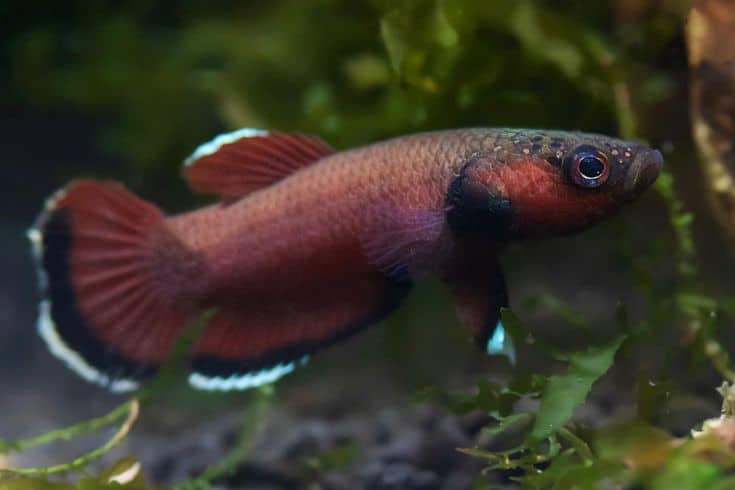
As with all animals, there are always exceptions to the rule. In some rare cases, bettas have been known to live as long as 8 years in captivity. However, this is definitely the exception rather than the rule.
The vast majority of snakehead bettas will live between 2 to 4 years. If your fish is on the older end of this spectrum, you may start to notice some changes in their appearance and behavior. They may become less active, their colors may fade, and they may even stop eating.
If you notice any of these changes, it’s important to take your betta to the vet as soon as possible. These could be signs of a serious illness; the sooner you catch it, the better.
Water Parameter Requirements
Now that we know what a snakehead betta looks like and how long they can live, let’s talk about their water parameter requirements.
Warm, Stable Water Temperature
First and foremost, it’s important to remember that bettas are tropical fish. This means that they need warm water reminiscent of their natural habitat to thrive. The ideal temperature range for a snakehead betta is between 74 and 86 degrees Fahrenheit.

If the water in your tank is too cold, your betta will become sluggish and may even stop eating. In extreme cases, prolonged exposure to cold water can lead to death. On the other hand, if the water in your tank is too warm, your betta will start gasping for air. Hot water doesn’t hold as much oxygen as cold water, so your pet will start swimming close to the water surface for air.
Evidently, it’s very important to ensure that your tank’s water temperature is stable. Large swings in temperature can stress your fish out and make them more susceptible to disease.
Pristine Water Conditions
Okay, pristine might sound like a little bit of a stretch – but keeping your water clean is incredibly important for the health of your snakeheads. These may be beginner species, but slight changes in ammonia and nitrite concentrations can still wreak havoc on their health! Stressed fish are also more susceptible to disease.
To keep your water clean and your snakeheads healthy, you should be doing regular water changes of at least 20%. If you can, aim for 30% to 50%! This may seem like a lot, but it’s really the best way to keep your fish happy and healthy.
You can also consider investing in a reverse osmosis unit to remove impurities from your water before putting it in the tank. This is yet another way to keep your water as clean as possible for your beloved bettas.
Acidic Water
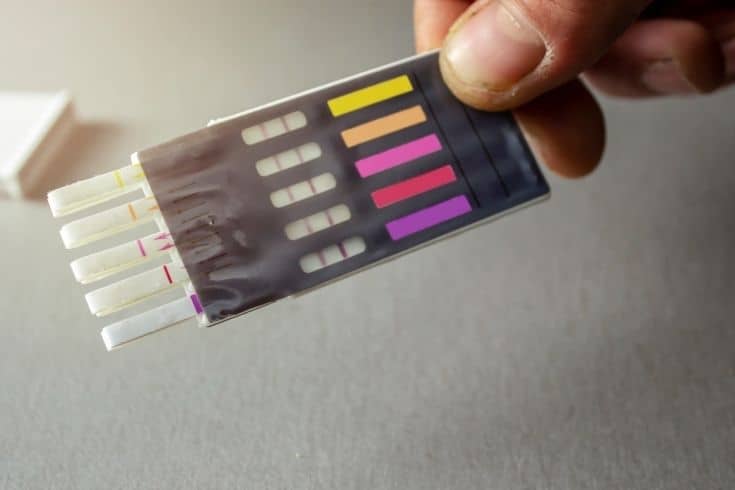
Snakehead bettas come from acidic waters in Southeast Asia. As a result, they prefer water with a pH between 4.0 and 6.6. These are significantly lower values than what is found in most tap water, so you’ll probably need to use a water conditioner to lower the pH of your tank water.
Natural peat and Indian almond leaves are two great options for lowering the pH of your water. These plant-based substances leach tannic acid into the water, which lowers the pH and makes the water more acidic.
You can also use a chemical pH adjuster, but be very careful with these as they can be very dangerous if not used correctly. We recommend using a natural solution like peat or Indian almond leaves whenever possible.
Temperament and Tankmates
This may sound like an oxymoron, but hear us out – though they may be dominant fish, snakehead bettas are widely considered peaceful species! In fact, they are often kept with other bettas and gouramis in community tanks.
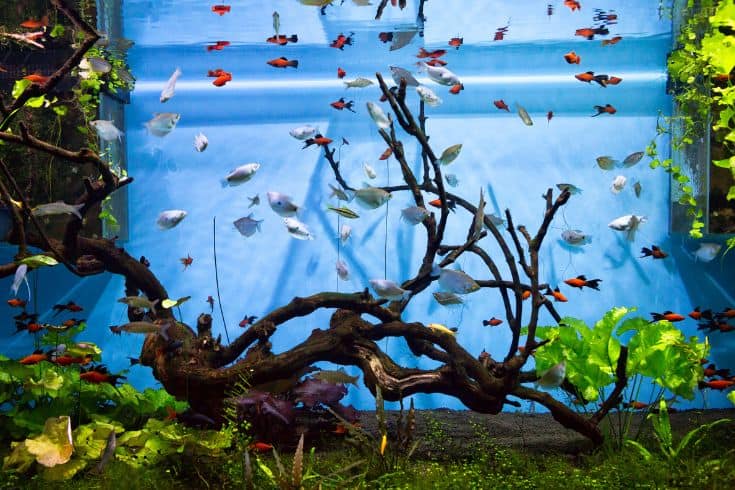
Of course, this doesn’t mean they can be kept with other fish. Snakehead bettas are territorial and may become aggressive if they feel their territory is being threatened. As a result, it’s important to choose tankmates that are non-aggressive and not likely to start any trouble.
Some fish species that make good tankmates for snakehead bettas include:
- Corydoras catfish
- Kuhli loaches
- Harlequin rasboras
- Otocinclus catfish
- Glowlight tetras
- Bristlenose plecos
Generally speaking, you should avoid keeping snakehead bettas with colorful fish or those that have long fins. These are both triggers for aggression in many fish species, and snakehead bettas are no exception.
What Do Snakehead Bettas Eat?
As carnivores, snakehead fish subsist on a diet of meat-based food in the wild, such as mosquito larvae, small crustaceans, and insects. In captivity, they can be a little bit more finicky, but there is still a good variety of meat, frozen food, and dry foods available that they will happily eat.
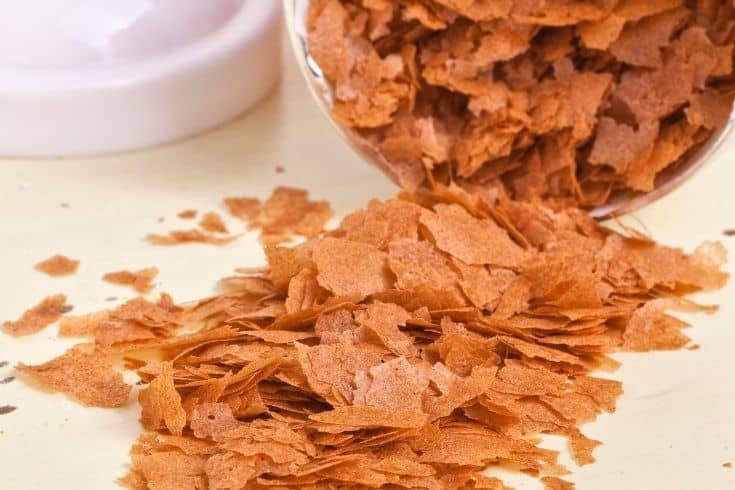
Pellets and flakes are the most common type of dry food available for fish, and they can be a great option for snakehead bettas. Look for a high-quality pellet or flake food designed for carnivores, and ensure it does not contain any plant matter.
You can also offer your snakehead betta live, frozen, or freeze-dried foods as a secondary food source. Things like baby brine shrimp and daphnia are usually a big hit and are a great way to add some variety to your betta’s diet.
Common Health Issues
Beginner fish owner or not, it’s important to be aware of the most common health issues that can affect your snakehead betta. This way, you’ll be adequately prepared to help your beautiful fish should they ever fall ill. Here are some of the most common health problems that snakehead bettas experience:
Health Issue
Ich (White Spot Disease)
Symptoms or Causes
Ich is a very common disease that’s caused by an aquatic protozoan parasite.
Fish infected with Ich develop a sprinkling of tiny white spots on their fins, gill covers, and bodies. They also flash against the gravel and other solid objects in the aquarium.
Suggested Action
Raise the water temperature to 82o F for three days. Use an OTC White Spot Disease medication to treat the tank.
Health Issue
Flukes
Symptoms or Causes
Flukes is the term used to describe various types of external fish parasites. These macroparasites can often be seen with the naked eye attached to the fish’s skin or gills.
Suggested Action
Treat the fish tank with an OTC antiparasitic medication.
Health Issue
Fungal infections
Symptoms or Causes
White fluffy growths on the fish’s body, mouth, and head.
Suggested Action
Quarantine infected fish, and treat with an antifungal medication.
Health Issue
Bacterial infections
Symptoms or Causes
Sores and ulcers on the body and head, ragged, bloody fins.
Suggested Action
Treat the tank with OTC antibacterial treatment.
Breeding Your Snakehead Betta
If you have several adult fish and you’re interested in breeding them, it’s important to know that snakeheads are a mouthbrooding species. Channoides males will keep fertilized eggs in their mouths throughout the incubation period, making this a markedly different process than other common methods of betta breeding.
- The first step is setting up a specialized tank to breed your fish. This tank should be at least 10 gallons in size and have plenty of plants and hiding places. Once the tank is set up, you’ll need to choose a pair of healthy adult fish to breed. The female should be larger than the male, and both fish should be free of any health problems.
- Once you’ve chosen your breeding pair, it’s time to introduce them to the tank. The male will usually take the lead in this process, and he will chase the female around until she is ready to spawn. When the female is ready, she will allow the male to catch her. The two fish will then embrace and release their gametes into the water.
- After the fish have spawned, the male will scoop up the fertilized eggs into his mouth and he will incubate them for the next three to four weeks. During this time, it’s important to maintain clean water conditions and to feed the fish live foods.
- Once the fry are born, they will be free-swimming and ready to fend for themselves. At this juncture, you should feed them a diet of live foods and finely ground flake food. This will ensure that they develop at an optimal growth rate and stay healthy.
Snakehead Betta Fish Tank Requirements
Now that you know everything there is to know about these amazing fish, it’s time to start setting up your tank! Here are the tank requirements for keeping a healthy snakehead betta:
Well-Chosen Decor
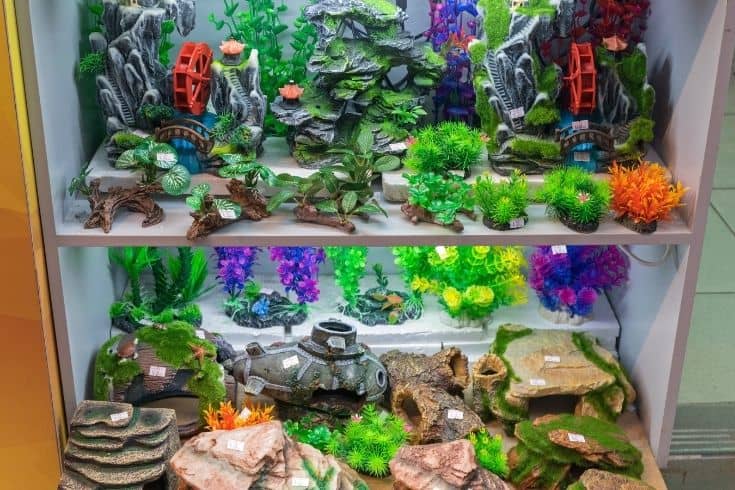
In the wild, snakehead bettas hide among the roots of trees and marginal plant roots. As such, providing plenty of shade spots and hiding places in your aquarium is a good idea. Driftwood, clay plant pots, and plants are all good choices, but even something simple, like different lengths of piping can provide some additional cover.
Just make sure that any objects you put in the tank are safe for fish and that they won’t fall and break the glass. Snakehead bettas are also known to be excellent jumpers, so having an extra cover or lid for your tank is always a good idea.
Filtration
Depending on the size of your aquarium, an air-powered sponge filter is usually sufficient to provide adequate filtration. If you have a larger tank, you might need to opt for a canister filter or a hang-on-back filter. Just make sure that the flow rate isn’t too strong, as snakehead bettas prefer still or slow-moving water.
In addition, you should also ensure that your filtration method of choice comes with biological media. You can encourage the growth of microbe colonies that will help to break down waste and keep your water quality high.
Ample Space
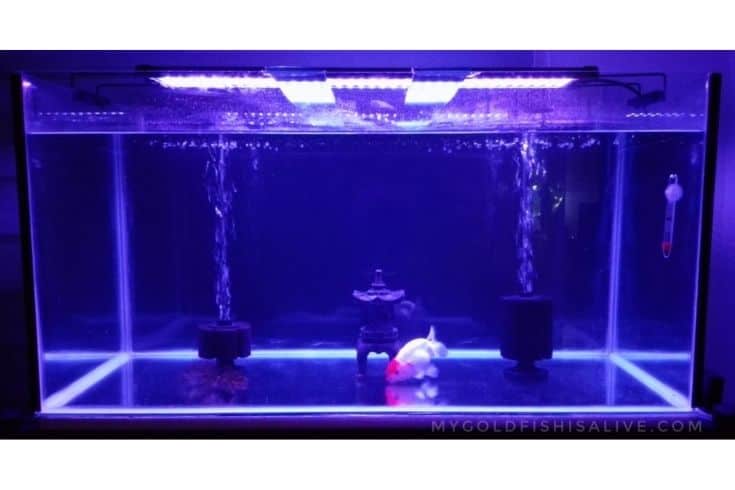
You may have heard that snakehead bettas are accustomed to shallow forest streams. While this is true, it’s important to note that they still need plenty of space to swim. As a general rule of thumb, you should aim for an aquarium that is at least 10 gallons in size. If you have a pair of snakehead bettas, you should increase the tank size to 20 gallons.
Of course, the larger the tank, the better. Not only will a larger tank provide your fish with more space to swim, but it will also give you more room to include a variety of different decorations and hiding places. A good depth will also make it less likely that your fish will jump out of the tank. Shallow water tends to be more turbulent, which can stress your fish.
Product Recommendations For Snakehead Betta Tanks
Ready to start setting up your very own snakehead betta tank? Here are a few product recommendations to get you started:
- Aqueon Aquarium Kit: This complete aquarium kit comes with everything you need to get started, including a filter, a heater, and an LED light. It also includes a fish food sample and water conditioner.
- Fluval Aquarium Filter: This powerful canister filter is ideal for larger tanks. It comes with a variety of different media, so you can customize it to meet the needs of your fish.
- Hikari Betta Bio-Gold Pellets: These high-quality pellets are a great choice for snakehead bettas. They’re made with nutritious ingredients that will help to keep your fish healthy and active.
Once you’ve gathered everything you need, you can start setting up your tank!
Setting Up A Snakehead Betta Tank
The first thing you’ll need to do is choose the location for your tank. Finding a spot that is out of direct sunlight and away from any drafts or heat sources is important. Once you’ve found the perfect spot, you can start setting up your tank.
If you’re using a new tank, you’ll need to cycle it before adding any fish. This process can take anywhere from 4-6 weeks, so patience is important. You can cycle your tank by adding a small amount of fish food to the water and letting it decompose.
You can also add live plants to your tank, which will help to cycle the water and provide your fish with some additional hiding places. Once your tank is cycled, you can start adding your snakehead betta fish.
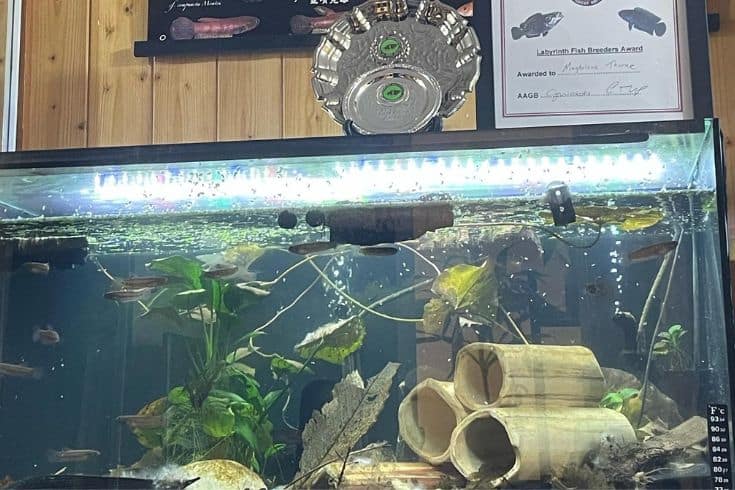
When adding your fish to the tank, it’s important to do so slowly. Start by floating the bag that your fish came in on top of the water. Then, open the bag and allow a small amount of water to enter. After about 15 minutes, you can release your fish into the tank.
There you have it! Your very own snakehead betta tank! Once your fish is acclimated to its new home, you can start adding some decorations. It’s important to provide your fish with plenty of hiding places, as they tend to be shy.
The Takeaway
Hopefully, this article has given you a better understanding of what’s involved in keeping snakehead bettas as pets. These fish are unique and make for a fun and rewarding addition to any home.
If you’re thinking about adding a snakehead betta to your tank, be sure to do your research and purchase everything you need in advance. With a little bit of planning, you can create the perfect home for your new pet. Thanks for reading, and good luck!
